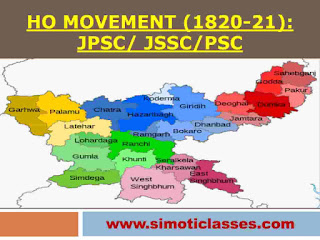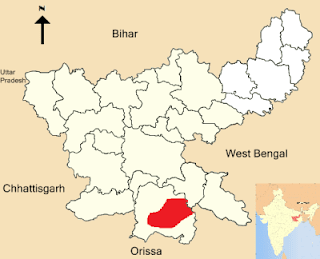Maurya and Post-Maurya Period
Mauryan Period:
- Chandragupta Maurya (322 BC- 298 BC) established the Maurya dynasty in Magadha by defeating Dhananada, the last ruler of the Nanda dynasty, with the help of his guru Kautilya (other names Chanakya, Vishnugupta). The ruler of the Nanda dynasty were the masters of a huge army. The army of the Nandas included the tribal soldiers of Jharkhand as well as elephants. In fact, an important reason for Magadha's military success was the tribal element involved. Chandragupta Maurya, the destroyer of the Nanda dynasty and the founder of the Maurya dynasty, was familiar with the region of Jharkhand.
- Kautilya in his book 'Arthashatra' has called this region Kukut/Kukutdesh. According to Kautilya, there was a republican system of government in Kukutdesh. To keep the tribes under control, using them in the interest of Magadha and preventing their alliance with the enemies of Magadha, an officer named 'Aatvik' was appointed.
- Under 'Aatvik' there were other officers like 'Nagadhyaksha', 'Vanadhyaksha', 'Nagpal', 'Vanpal'. The trade route from Magadha to South India passed through Jharkhand. Therefore, Jharkhand had commercial importance. Kautilya has written that diamonds were obtained from the rivers of 'Indravanak'. Indravanak was probably the area of the rivers Inva and Shankh.
- Chandragupta Maurya's grandson Ashoka (273 BC- 232 BC) had indirect control over the tribes here. Ashoka's 13th inscription lists the states adjacent to Ashoka, one of which was Aatvik/Atvi/Atav. The Aatvik region extended from Baghelkhand to the coast of Orissa. Jharkhand region was also included in this region.
- One of the religious campaigners sent by Ashoka was also sent among the Atavi tribes. The name of the leader of this party was Rakshit. Ashoka's separate Kalinga edict 2 says of the unincorporated tribes bordering Orissa: 'they should practice Dharma for me so that they may attain the world and hereafter, the tribes of the Jharkhand region are also indicated in the unincorporated tribes bordering Orissa.
The most important thing of this period was:
- The discovery of some coins of this period in the areas of Jharkhand gives an impression that the rulers of this period must have ruled in this area.
- Coins of Roman emperors have been found in Singhbhum.
- Indo-Scythian coins have been found in Chaibasa.
- Coins of the first and second centuries of the Kushan period have been found in Ranchi, a Pura-Kushan coin of the third century has also been received from here. There is no king's name on these coins.






























